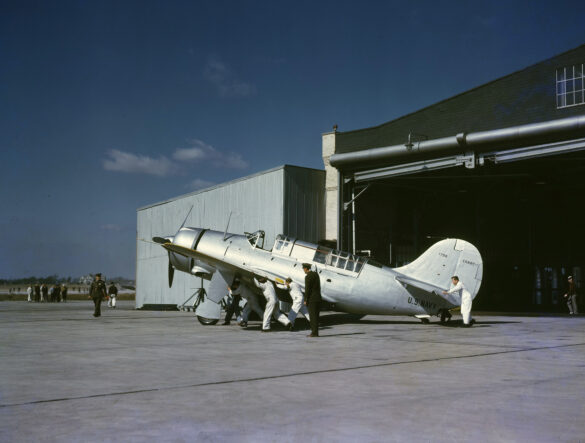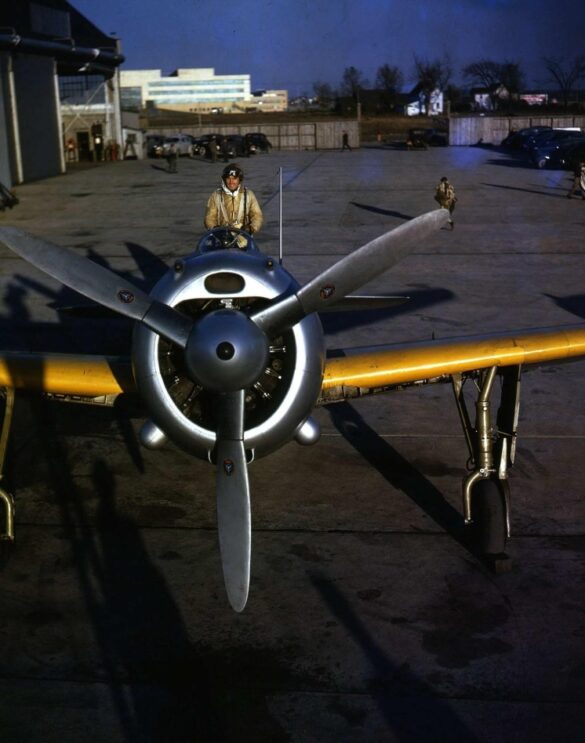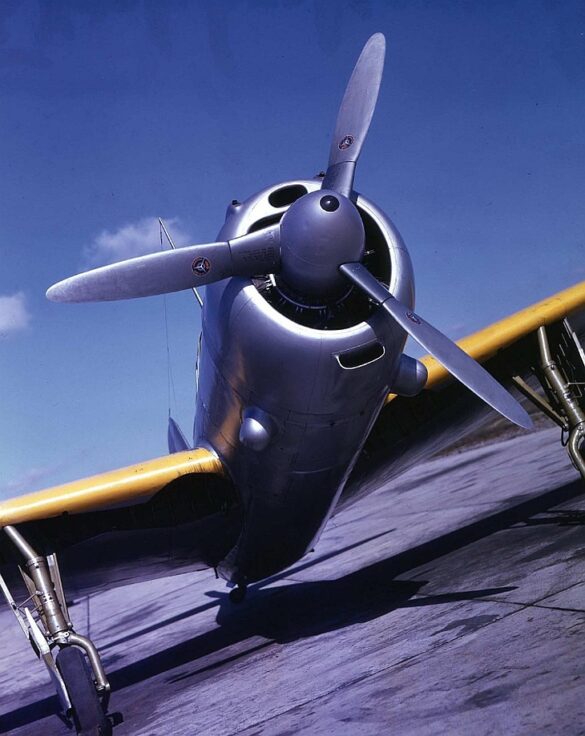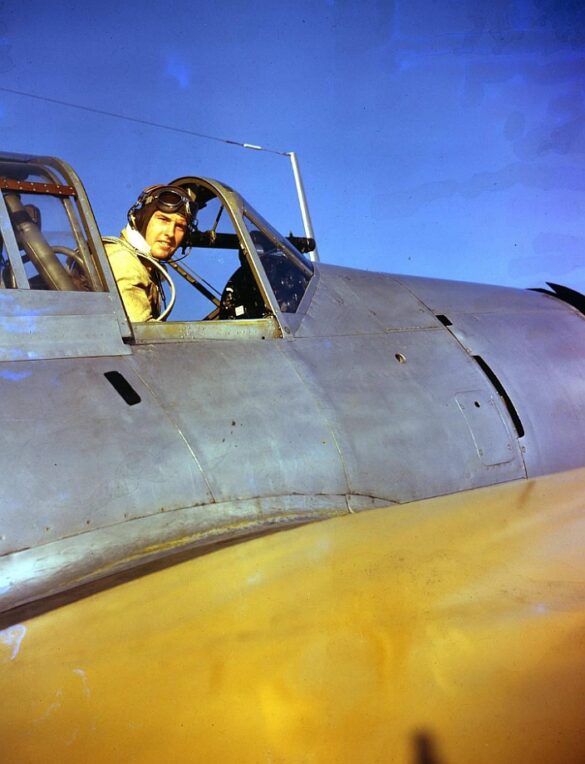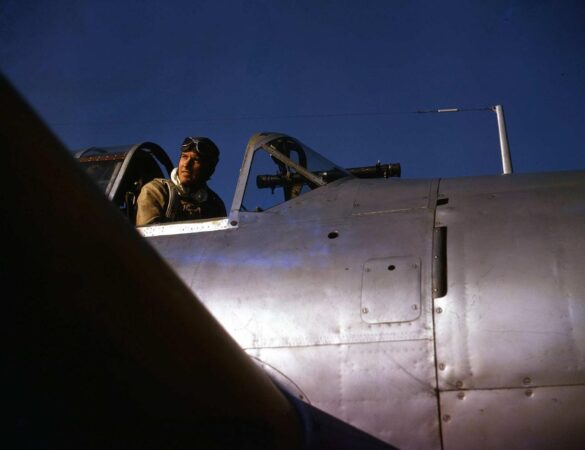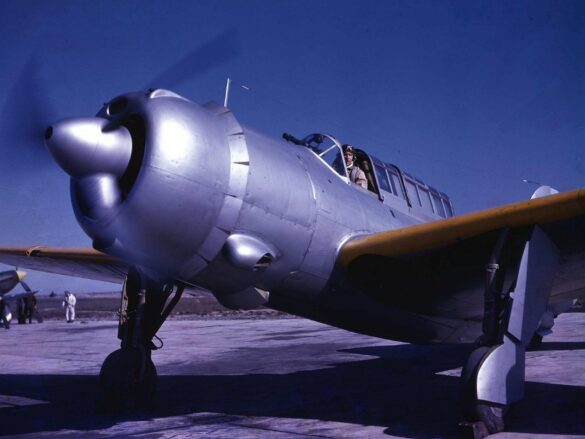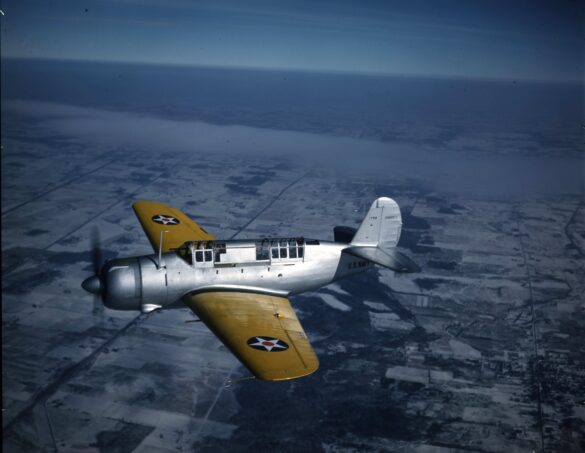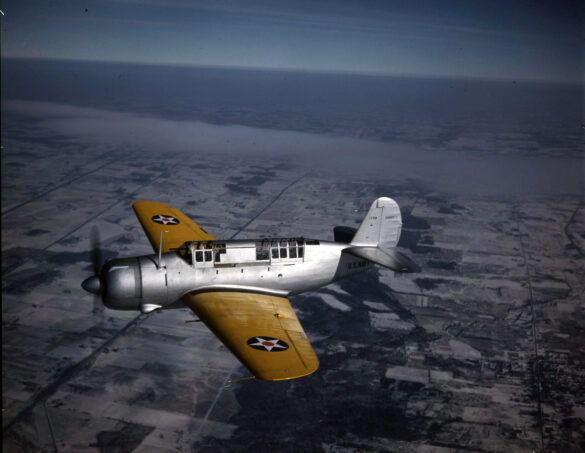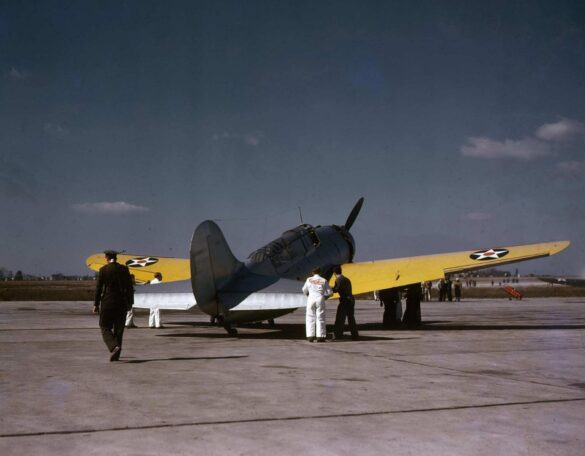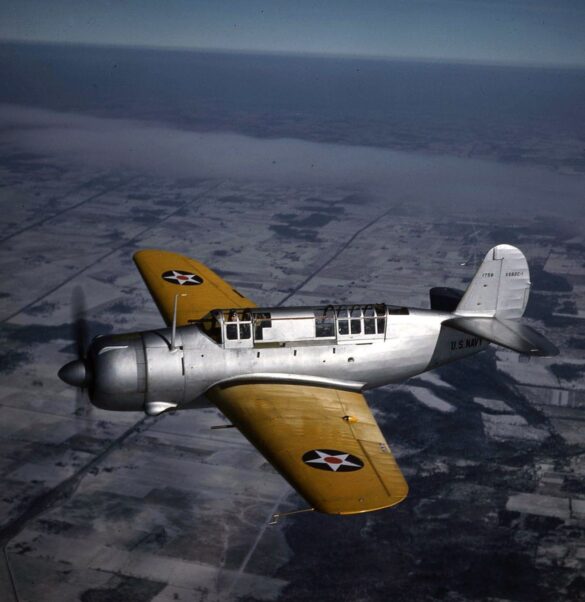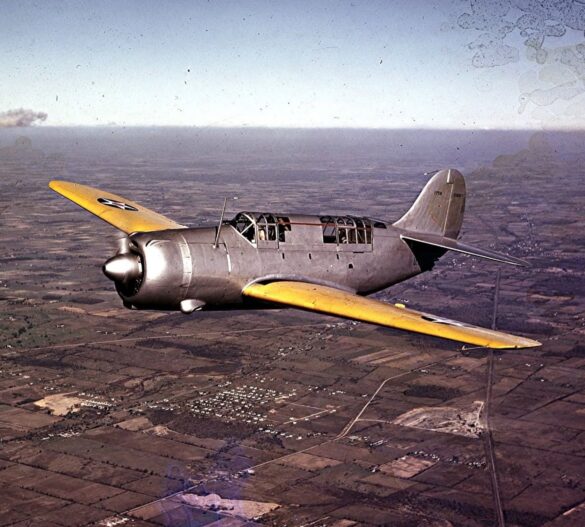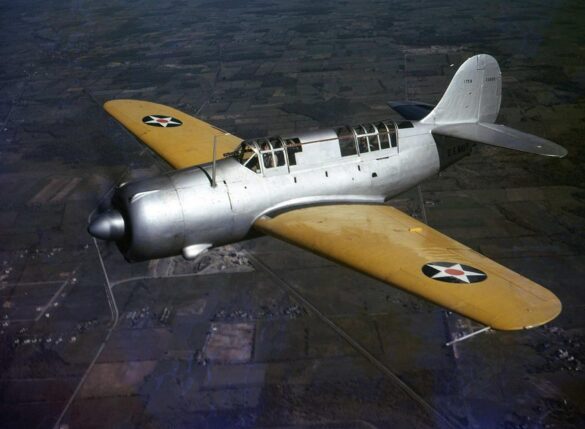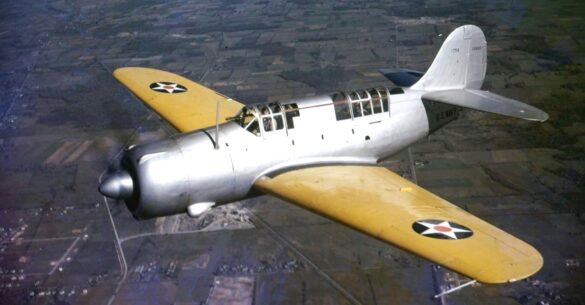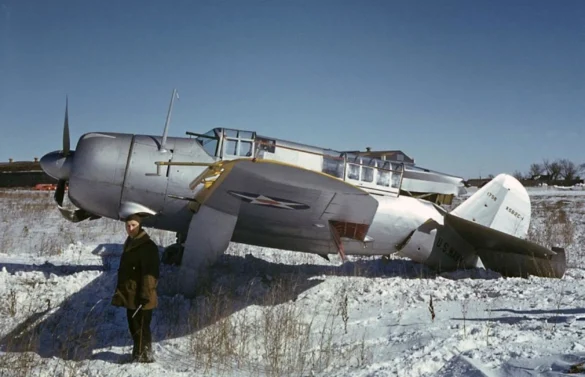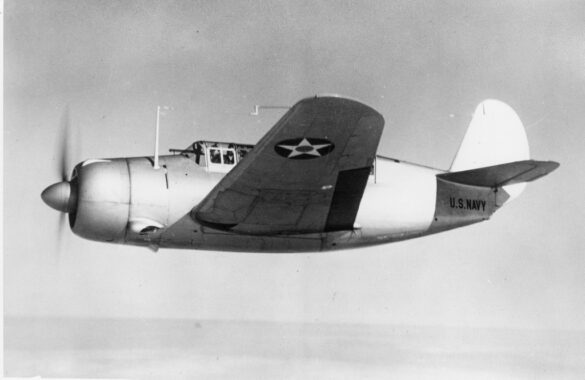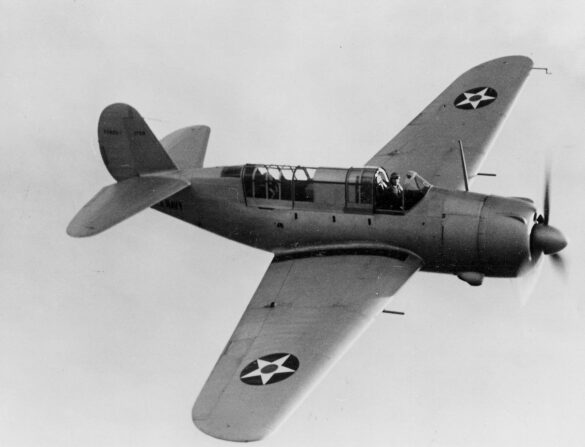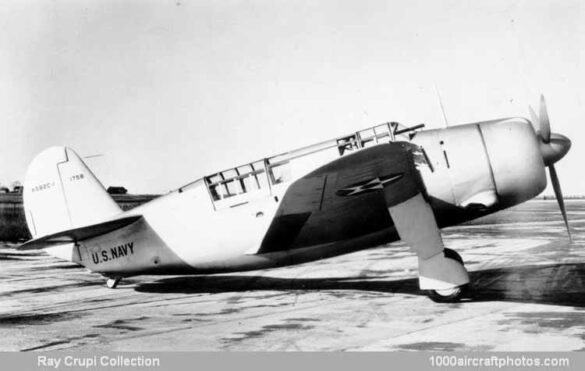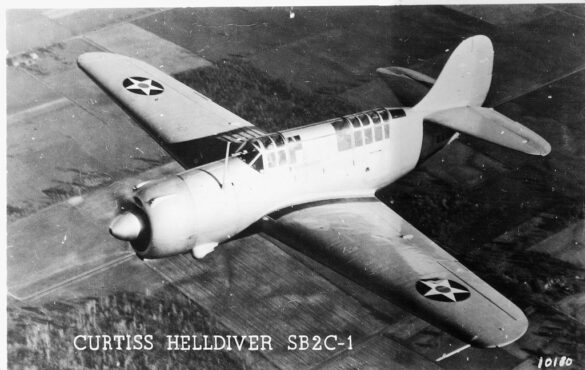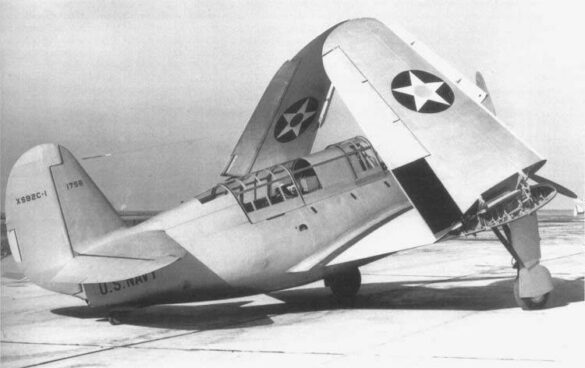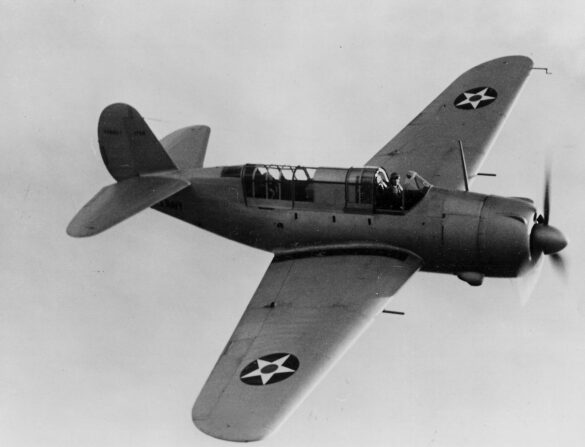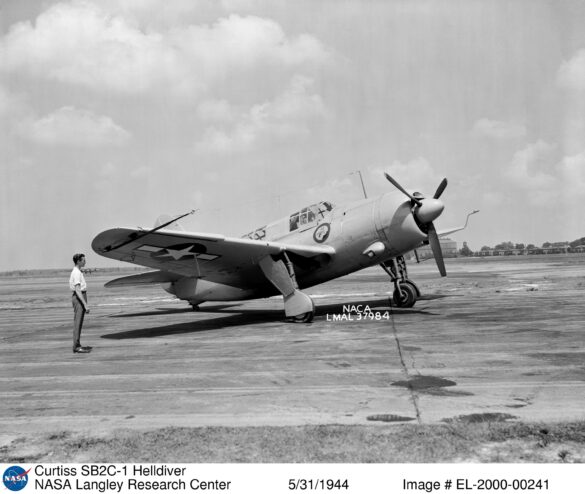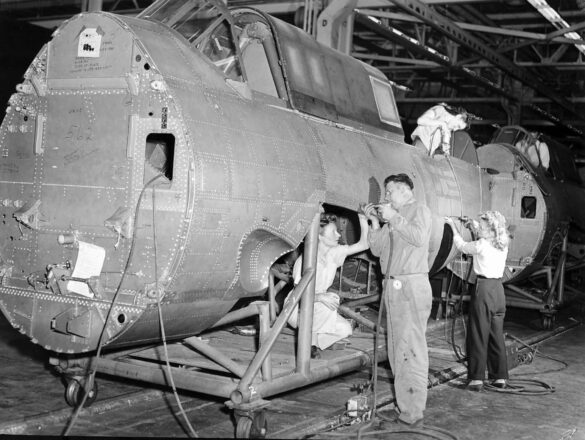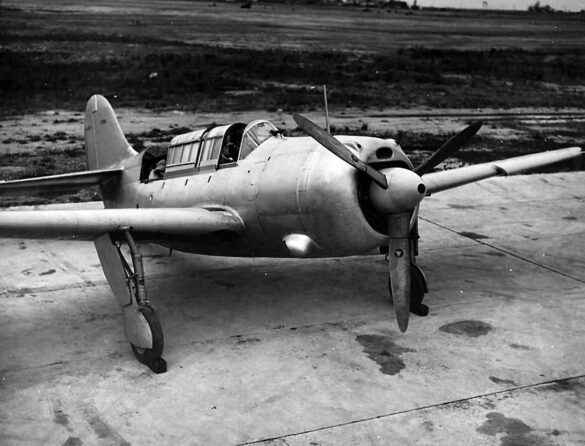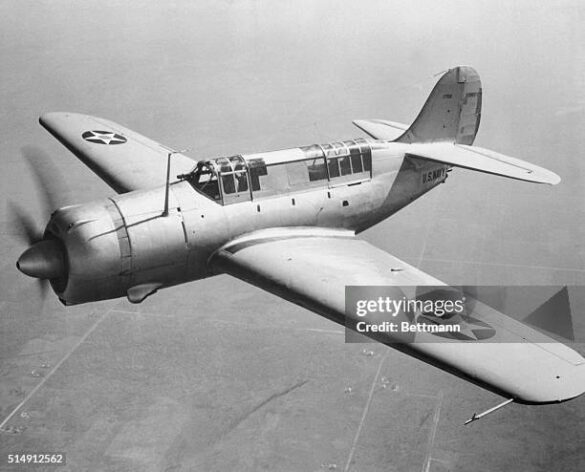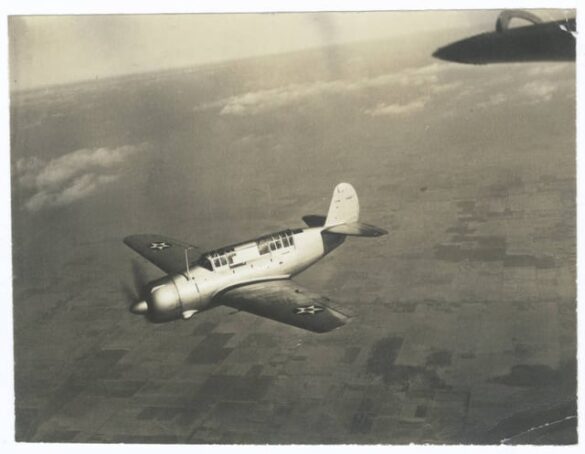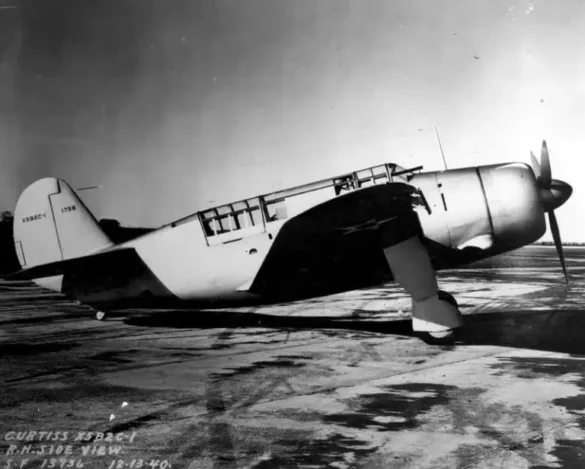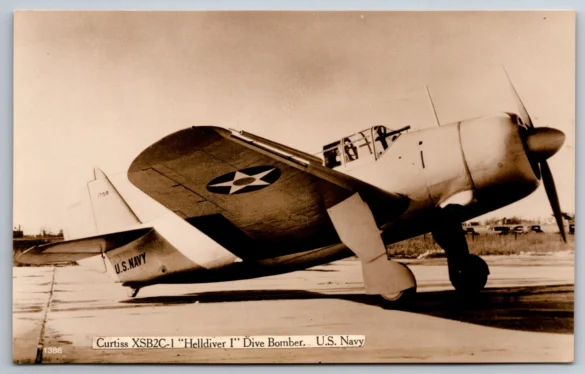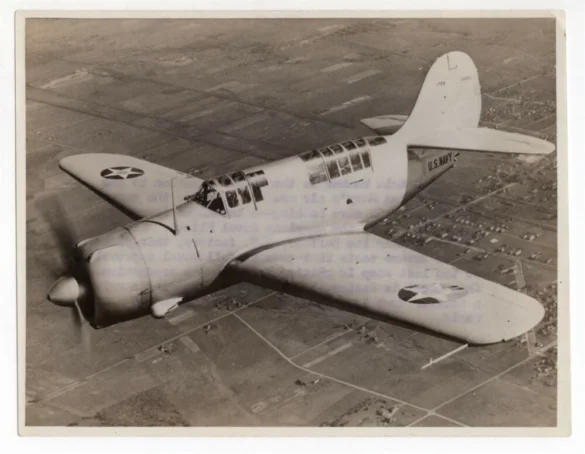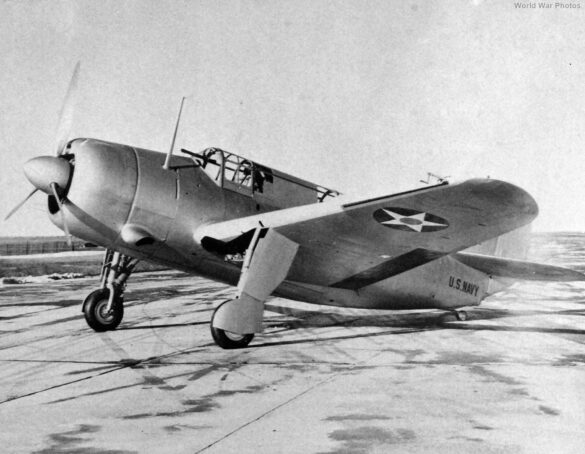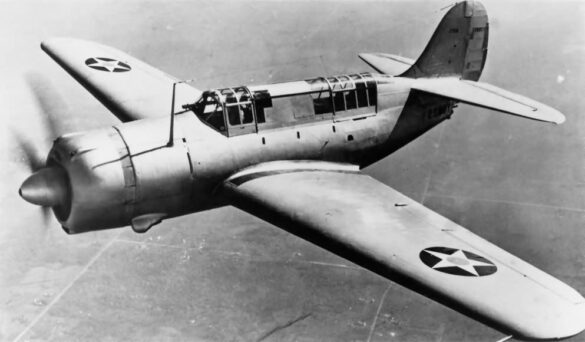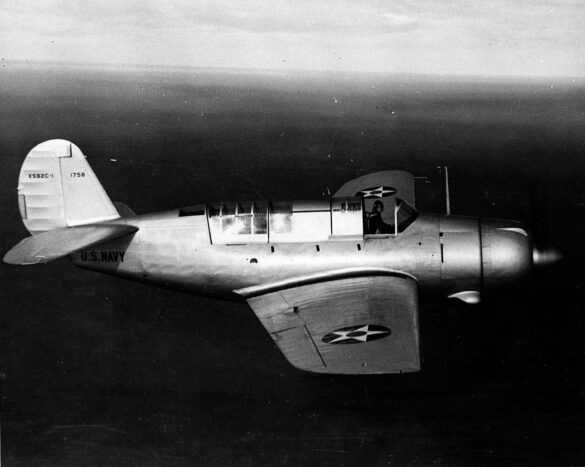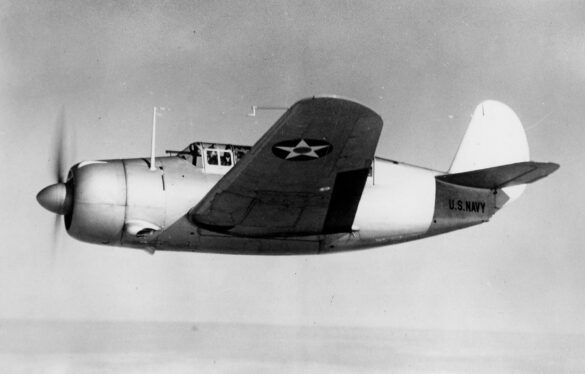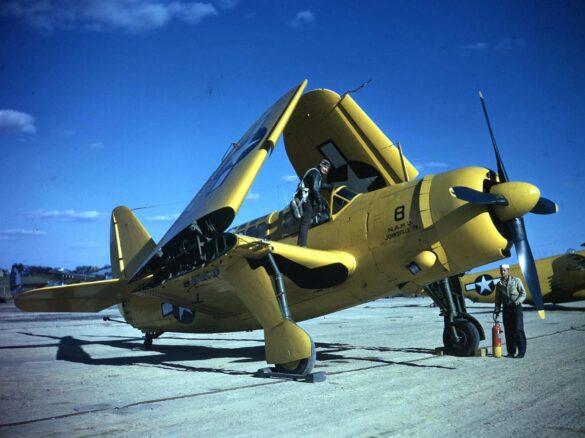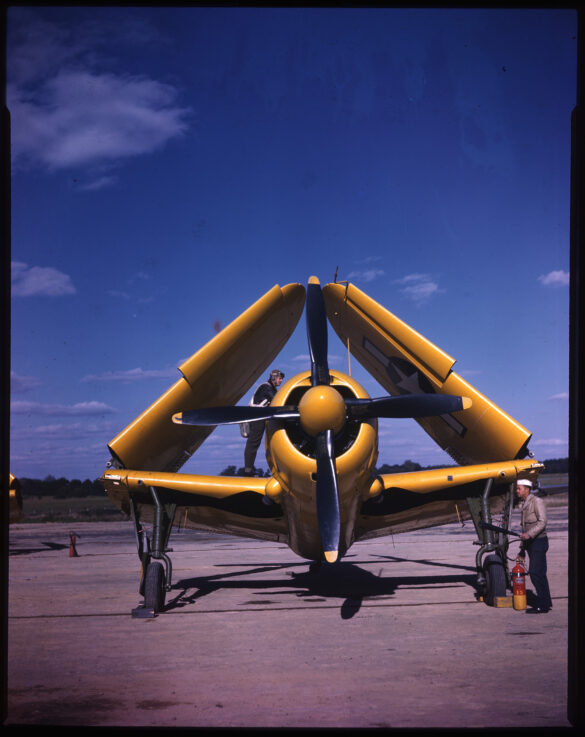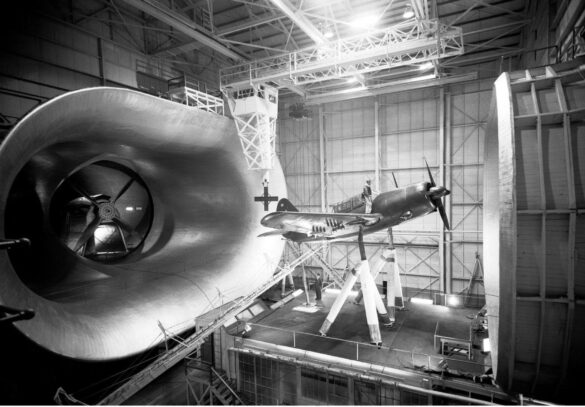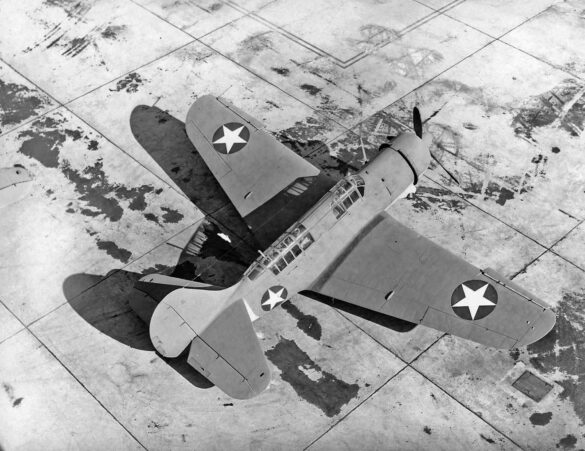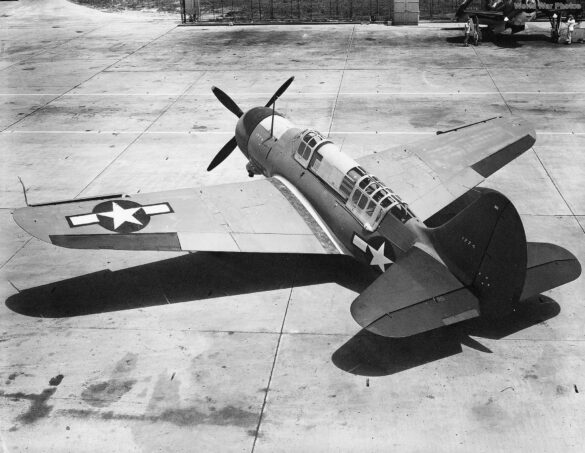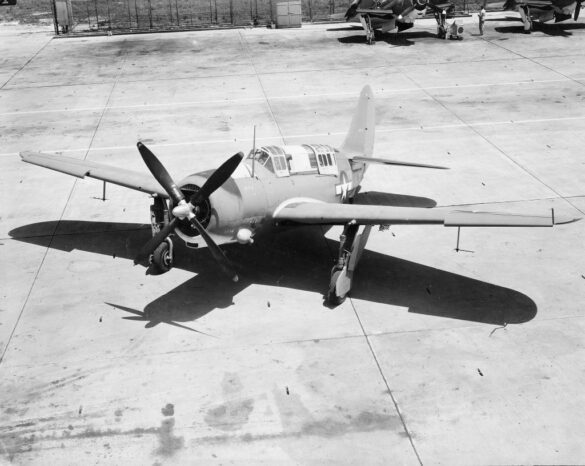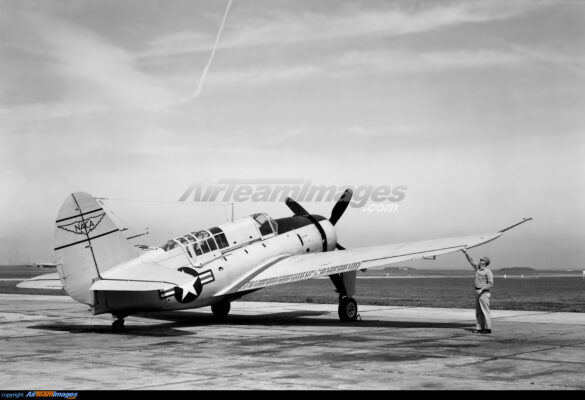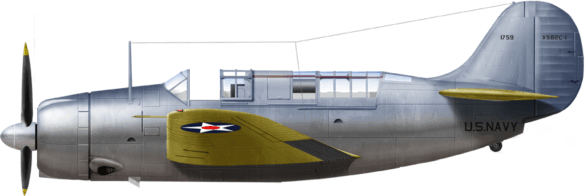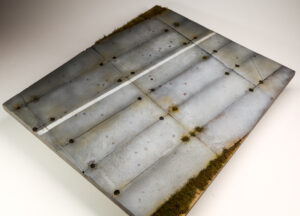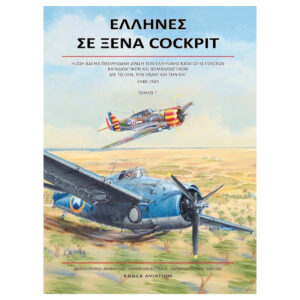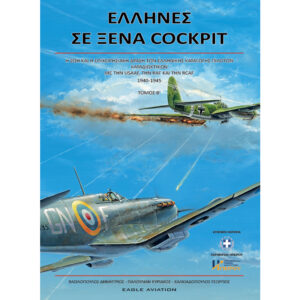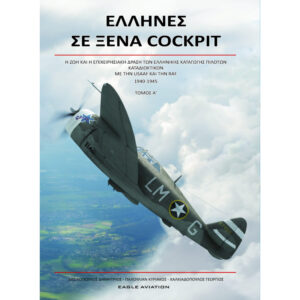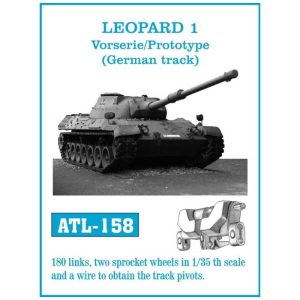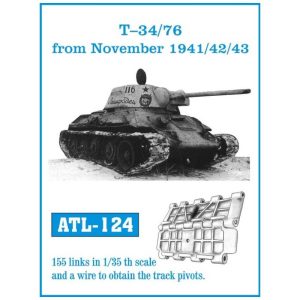article
Curtiss-Wright XSB2C-1 Helldiver: From Prototype to Glory and Tears
1. General Introduction
The Curtiss SB2C Helldiver was the successor to the popular SBD Dauntless in the US Navy, tasked with heavy dive attacks from aircraft carriers in the Pacific. Although it ended up becoming one of the most massive naval bombers, its development was fraught with problems, delays and technical impasses.
2. Design and Project Award
Curtiss-Wright took on the ambitious project of replacing the Dauntless in 1938. The chief designer was Raymond Blaylock, who worked under the direction of Don Berlin, known for designing the Curtiss P-40.
Original Designation: XSB2C-1 (Experimental Scout Bomber, 2nd model by Curtiss)
Date of Prototype Contract Award: 15 May 1939
3. First Flight of the Prototype
The first XSB2C-1 (Bu. No. 1758) took off on 18 December 1940 from Buffalo, New York.
Flight Problems:
The R-2600-8 engine did not deliver the intended power.
Low stability in the lateral and vertical axes.
The test pilot almost lost control on the first flight.
The structure was fragile and showed cracks in the frame.
“The Path of the Helldiver”
Infographic idea (in Canva, PowerPoint or plugin):
Timeline (very simple horizontal layout or vertical mobile)
Year Stage Description
1938 Project assignment US Navy seeks replacement for SBD Dauntless
1940 First flight Prototype XSB2C-1 Helldiver flies on 18 Dec. 1940
1941–1942 Continuous failures Crashes, poor stability, pilot reactions
1943 Entry into service SB2C-1 begins operations – gradually replaces Dauntless
1944 Peak of missions Operates massively in the Pacific with SB2C-3 and SB2C-4
1945 End of War SB2C-5 in limited production – beginning of withdrawal
1959 End of an era Last service in Italian naval forces
4. Technical Problems and Delays
The Helldiver was an aircraft designed with many promises: retractable wings, an enclosed bomber compartment, double wings with dive brake flaps, but…
Problems:
Weight: The weight was significantly increased from the initial estimate.
Landing: Continuous wheel and wing breakages.
Visibility: Poor for the pilot, especially during landing.
Overloading: Too many weapons and mechanical systems for the size of the aircraft.
5. Seaplane Version – Curtiss XS2C-1
A seaplane version with double floats was designed in 1942 under the code XS2C-1. It never progressed beyond the mock-up stage due to poor cruising and instability. The Navy decided that the weight and requirements of the SB2C were not suitable for a seaplane.
6. Improvements and Final Production Version
After 889 modifications (!), production began with the SB2C-1 in 1942, but the first operational model to be considered fully reliable was the SB2C-3, with a new R-2600-20 engine and four-blade propeller.
Final Configuration: SB2C-5
The final SB2C-5 version (1945):
Range: Increased fuel (300 gallons)
AN/APS-4 radar
Enhanced dive system
Improved instrument panel
Rear machine gun removed on some versions
7. Production and Career
Total Production: 7,140 units
Countries of Use: US, France, Greece, Thailand, Portugal
Battles: Philippines, Okinawa, Japan
Replacement: Grumman AF Guardian and Douglas A-1 Skyraider
8. Legacy and Evaluation
The Helldiver went down in history as “The Beast” due to its unwieldy nature. Although it was heavily criticized, especially by early pilots, its final form proved to be a reliable tool for the U.S. Navy.
Curtiss XSB2C-1 Prototype – Color Reference Chart
| Color / FS Code | Main Surface<br>(Natural Metal) | Cockpit<br>(FS 34151) | Engine / Exhaust<br>(FS 36118) | Dive Brakes<br>(FS 31136) | Warning Stripes<br>(FS 33538) |
|---|---|---|---|---|---|
| Gunze Aqueous (H) | H8 | H58 | H305 | H3 | H329 |
| Gunze Mr. Color (C) | C8 | C27 | C305 | C3 | C329 |
| Humbrol | 56 | 226 | 125 | 60 | 154 |
| Model Master | 1780 | 1715 | 1723 | 1705 | 1708 |
| Revell | 99 | 360 | 74 | 330 | 12 |
| Tamiya | XF-16 | XF-71 | XF-24 | XF-7 | XF-3 |
| Vallejo Model Air | 77.701 | 71.137 | 71.097 | 71.102 | 71.078 |
| Vallejo Model Color | 70.863 | 70.923 | 70.860 | 70.947 | 70.952 |
| AKAN | — | — | — | — | — |
| AK Interactive (3rd Gen) | — | — | — | — | — |
| AK Real Colors | RC020 | RC262 | RC247 | RC222 | RC007 |
| AMMO by Mig | A.MIG-194 | A.MIG-220 | A.MIG-229 | A.MIG-218 | A.MIG-046 |
| Colourcoats (WEM/Sovereign) | — | — | — | — | — |
| Hataka | HTK-A070 | HTK-A016 | HTK-A116 | HTK-A100 | HTK-A091 |
| Lifecolor | LC74 | UA004 | UA033 | UA085 | UA090 |
| Mission Models | MMM-003 | MMP-035 | MMP-097 | MMP-003 | MMP-006 |
| Mr. Paint (MRP) | MRP-3 | MRP-131 | MRP-100 | MRP-104 | MRP-135 |
| Xtracolor (enamel) | X142 | X117 | X130 | X7 | X106 |
| Xtracrylix (acrylic) | XA1212 | XA1117 | XA1130 | XA1002 | XA1012 |
This chart represents the XSB2C-1 Prototype, Bu. No. 1758, with natural metal finish.
Some colors such as Dive Brakes Red and Warning Yellow may not be present depending on test phase.
The cockpit was painted in the standard U.S. Navy Interior Green (FS 34151).
Modeling Suggestions – SB2C Helldiver
Kits (Scale Models):
Academy 1/72 SB2C-1C Helldiver
eshop.gmodelart.com
Trumpeter 1/48 Curtiss SB2C-4 Helldiver
eshop.gmodelart.com
Eduard 1/72 ProfiPack SB2C-5 Helldiver
Includes photo-etched and masks
Decals:
Caracal Models SB2C Helldiver in WWII (1/48)
Print Scale 72-010 SB2C Early Prototypes + Silver Paintschemes
Techmod Decals SB2C-1 Prototype XSB2C-1 (Natural Metal)
P-38G Lightning – Rex Barber’s “Yamamoto Interceptor”By Chris Wauchop
Books & References:
“Curtiss SB2C Helldiver in Action” – Squadron/Signal
“US Navy Dive Bombers 1940-1945” – Osprey Combat Aircraft
“Helldiver Units of WWII” – Steve Ginter Publications
https://airandspace.si.edu/stories/editorial/curtiss-sb2c-helldiver-big-tailed-beast
Gallery

